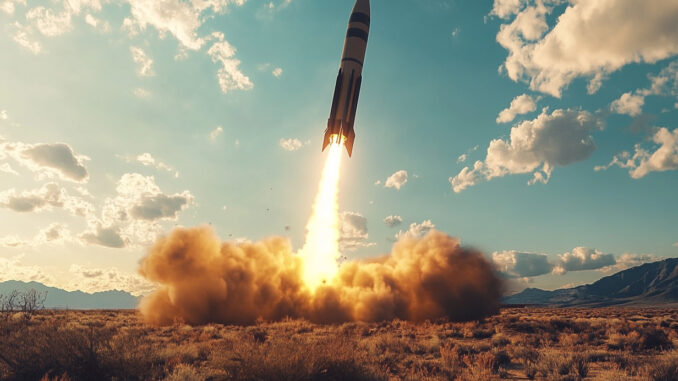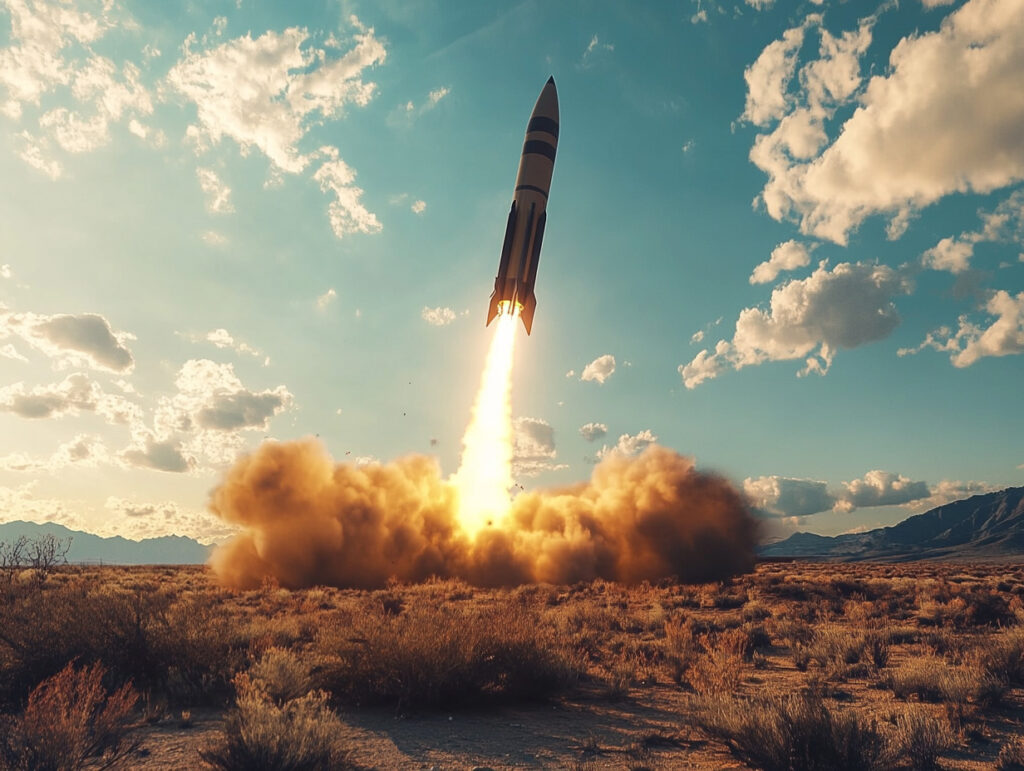
Iranian ballistic missiles are arriving in Russia, changing the dynamics of the Ukrainian conflict and increasing geopolitical tensions.
Iran has begun delivering ballistic missiles to Russia, according to several sources, including the Wall Street Journal. This delivery, comprising several hundred short-range missiles, marks a turning point in the conflict between Russia and Ukraine, as it strengthens Russia’s precision weapons capabilities. These Iranian missiles, notably the Fath-360, increase Russia’s means of attack, while the Western weapons promised to Ukraine have been slow to be delivered. Iranian military support for Russia could lead to an intensification of the conflict and complicate peace negotiations.
Iranian missile deliveries to Russia: a turning point in the conflict
According to several reports, Iran has delivered several hundred short-range ballistic missiles to Russia, boosting Russia’s offensive capabilities in the midst of its war with Ukraine. The exact type of missiles has not been confirmed, but sources indicate that they could be Fath-360, missiles capable of covering a distance of 120 kilometres thanks to satellite and inertial guidance.
These missiles, which are less effective than the Russian Iskander (range of around 500 kilometres), are nonetheless sufficiently accurate and numerous to enable Russia to better manage its Iskander resources, reserving them for longer-range strikes. This development underlines Iran’s growing commitment to Russia, not only as a supplier of armed drones, but also of advanced ballistic technologies.
Iran’s involvement in the Russian-Ukrainian conflict is changing regional geopolitical dynamics. Iran has already been criticised for its military support for Moscow, but the delivery of ballistic missiles marks a new escalation. In response, Ukraine’s Western allies continue to promise arms, but delivery delays and restrictions on the use of long-range weapons are holding back the Ukrainian counter-offensive.
Fath-360 missile capabilities and military impact
The Fath-360 missiles delivered to Russia by Iran are short-range ballistic missiles equipped with an advanced satellite and inertial guidance system. This type of missile, with a range of 120 kilometres, enables precise strikes against military targets such as weapons depots, critical infrastructure and strategic positions. Their high-precision guidance makes these missiles particularly effective against fixed targets.
In comparison, the Russian Iskander missiles, widely used against Ukraine, have a much longer range, of up to 500 kilometres. However, the Fath-360 allows Russia to concentrate its Iskander missiles on more distant targets, while using Iranian missiles for strikes closer to the front. The Fath-360 are also easier to produce in large quantities, which could enable Russia to maintain a high strike rate without exhausting its reserves of more sophisticated missiles.
The arrival of these missiles in Russia could considerably boost Russian military capabilities, particularly in a context where precision weapon stocks are a major issue for all the forces involved in the conflict. According to some estimates, Russia may already have used up around 80% of its stocks of Iskander and other ballistic missiles since the start of the conflict, making these Iranian deliveries crucial to maintaining the pressure on Ukrainian forces.

Russian troop training in Iran
Reports also indicate that Russian troops have been trained in Iran to use the new Iranian ballistic missiles. This training shows the extent of military cooperation between Moscow and Tehran, which extends far beyond the simple supply of equipment. The training of Russian soldiers on Iranian soil marks a further stage in the collaboration between the two countries, which share common objectives in their confrontation with the West.
This training is a strategic advantage for Russia, which needs qualified operators to use these missile systems effectively. Improper use of these weapons, without adequate training, could lead to costly errors on the battlefield, reducing the effectiveness of strikes. In addition, the rapid integration of these systems into the Russian arsenal could have an immediate impact on the course of the conflict in Ukraine, especially in areas where Russian forces are struggling to maintain their lead.
Russia’s ability to rapidly train its troops in the use of these new missiles could give Moscow a temporary tactical advantage, enabling it to carry out more frequent and more precise strikes against Ukrainian positions. This dynamic could force Ukraine and its allies to reassess their strategy, in particular by speeding up the delivery of air defence systems to counter the growing ballistic missile threat.
Ukraine and the ballistic missile threat
The arrival of Iranian ballistic missiles in Russia poses a major strategic challenge for Ukraine. These weapons, with their range of 120 kilometres, cover a large part of Ukrainian territory, leaving many critical infrastructures vulnerable. The ballistic missiles, combined with the use of Iranian kamikaze drones, create an environment in which Ukraine must strengthen its air defence capabilities.
Ukrainian President Volodymyr Zelensky has stressed the importance of obtaining more long-range weapons from its Western allies. Ukraine has already received missiles such as the Storm Shadow from the UK and the SCALP-EG from France, but stocks of these weapons are limited. In addition, most Western allies are reluctant to authorise the use of these missiles for strikes inside Russian territory, which reduces the strategic effectiveness of these weapons.
In response to the introduction of Iranian missiles into Russia’s arsenal, Ukraine may need to strengthen its defences with systems capable of intercepting these ballistic missiles. Air defence systems such as the Patriot and NASAMS, already supplied by the United States and other allies, are effective against certain types of missile, but deploying them in sufficient numbers is a logistical challenge. What’s more, these systems are expensive to buy and maintain. The cost of a Patriot battery is estimated at around €1 billion**, with an additional cost for each interceptor missile.
The geopolitical and economic implications of Iran-Russia military cooperation
Iran’s growing involvement in the Ukrainian conflict, through the supply of ballistic missiles to Russia, has significant geopolitical implications. On the one hand, it strengthens the Iran-Russia axis, which is increasingly positioning itself as a counterweight to Western alliances. On the other, it could lead the United States and the European Union to impose new sanctions against Iran, which could exacerbate the economic crisis the country is going through.
From an economic point of view, the delivery of Iranian missiles to Russia could be seen as a survival strategy for Iran, which is seeking to maintain solid relations with strategic partners such as Russia, in exchange for political and economic support. The Iranian defence industry, which has developed rapidly in recent years, is becoming a key asset for Tehran in its international relations.
However, this cooperation could also come at a cost to Iran. By strengthening its military ties with Russia, Iran could expose itself to new international sanctions, particularly from the United States, which is keeping a close eye on Tehran’s role in the conflict. Economic sanctions could have a significant impact on the Iranian economy, already weakened by years of international restrictions and internal mismanagement.
A new phase in the Russian-Ukrainian conflict
The arrival of Iranian ballistic missiles in Russia marks a new stage in the conflict in Ukraine, with major strategic and geopolitical implications. The military cooperation between Iran and Russia, which now extends to ballistic missiles, strengthens Moscow’s position in the face of Western sanctions and Ukrainian military pressure.
For Ukraine, this new threat requires a rapid response, both in terms of air defence and long-range offensive capabilities. Kyiv’s Western allies will have to step up their support, notably by delivering more sophisticated weapons and increasing stocks of long-range weapons.
This situation also highlights the complexity of the conflict in Ukraine, which has become a battleground for the world’s major powers, with repercussions that go beyond regional borders.
War Wings Daily is an independant magazine.